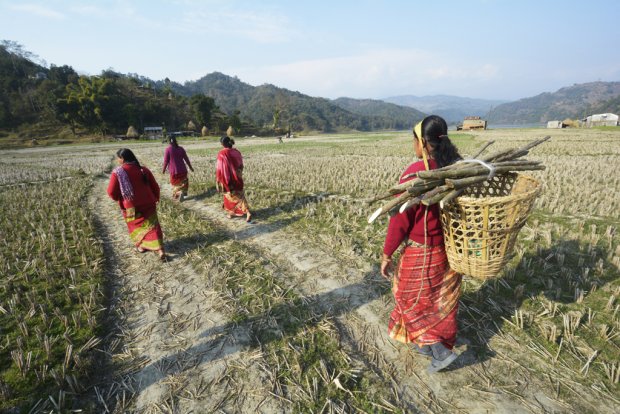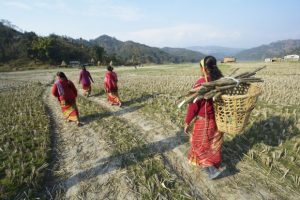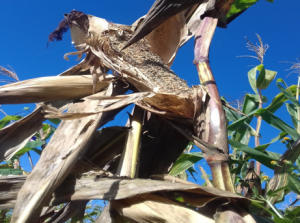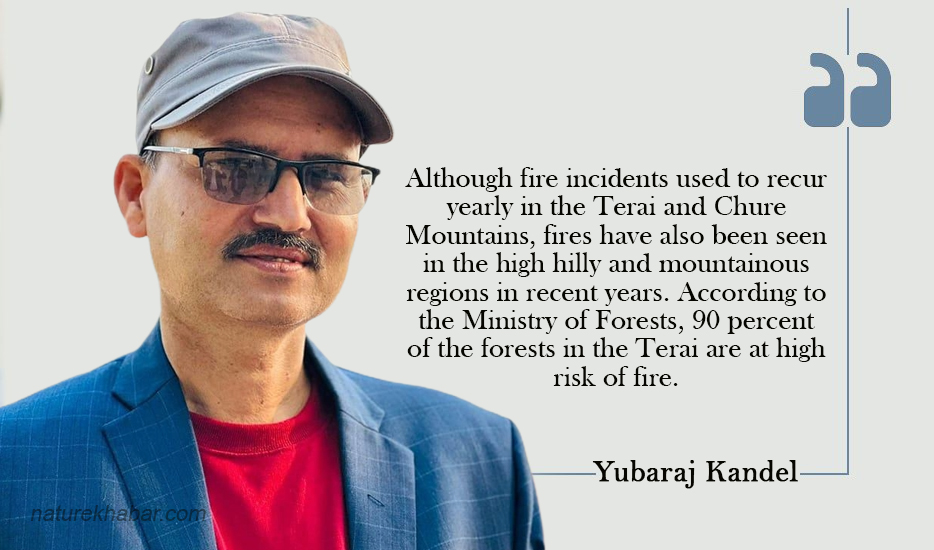Focus on self reliance is the focus on food security
- Nature Khabar


To revive the economy hard-hit by the pandemic, and to be food secure, it is challenging yet very urgent to scale up the national production and self reliance through agriculture.
Food security has been put at the forefront of the national agenda ever since the pandemic hit Nepal. Everybody began to talk about agriculture and how Nepal being an agrarian nation should return back to the future of farming.
The federal, provincial and local governments mentioned that agriculture as their major priority while some even announced prizes for the farmers who succeeded in producing certain quantities of food. The migrants from cities who returned to their villages started clearing the lands that were covered with bushes and invasive species after being abandoned for long period.
People in cities started roof-top farming. Pictures of the vegetables planted in the plastic bottles, Styrofoam boxes and even the old jeans flooded in the Social Medias and people even challenged each other to plant something new every day. Everyone talked about food security and agricultural revolution; from laymen to the bureaucrats, researchers to the policy analysts and so on.
While everyone was prioritizing agriculture and promoting farmers during this pandemic, the farmers faced a crisis like never before. The vegetables were buried in the waste piles citing the threats of the corona virus. What could be more absurd? Some of the farmers had to plough over the vegetables as there was no hope for the sale while others had no choice to sell for one or two rupees per Kgs of their hard earned produce.
The local productions were left to be rotten before reaching the market while the imports from neighbors never halted. Some of the farmers took an encouraging step to preserve and store the vegetables using traditional methods like sun-drying. The local governments and even the Agriculture Knowledge Center without any guilt cite “farmers facing shortage of the seeds and fertilizer is not a new thing in Nepal”.
The agencies established and assigned for addressing the problems of farmers and easing their works have not been working smoothly despite of the good policies and plans. No wonder, turning words into works remains a major challenge here.
Instead, the cooperatives once known as farmer’s friends are always in search of the critical situation like the pandemic, where they can just blame some absurd reasons to earn billions from the farmers who have no other choice than depend on the gold diggers.
The incident of 16 million rupees fraud in chemical fertilizers is just an example of how the farmers are being deceived every day. The farmers had no choice but to pay almost double the price for the chemical fertilizers as compared to previous years. The infuriating part is that the farmers lamented that they were provided the chemical fertilizers used in paddy for their maize crop this year. They have been complaining that the fertilizer this time was different and it did not work properly. There isn’t any authority who takes the responsibility and there’s no talk about accountability. These are just the representative threats and hardships. The problems of extension, access to markets, productivity, proper incentives to the farmers have always been there for long. Almost three-forth of Nepal’s agricultural lands are rain-fed and farmers have to look at the sky before sowing the seeds.

Farmers also have to bear the repercussions of climate change in addition to the pandemic. High incidence of pests and diseases, emergence of alien and invasive species, forest fires, prolonged droughts, changes in terms of early sprouting, flowering and fruiting, degradation of agricultural land, shift in agro-ecological zones and human-wildlife conflict are the other threats just to name a few. While increasing productivity has become the only option to tackle the probable famine after the post-pandemic period, the pests have threatened the major crops already. Farmers in Kavre, Sindhupalchowk, Ramechhap,Salyan, Nawalparasi and others spotted fall armyworm in maize crops during the peak farming season. Similarly, the threat of Locust worm created panic among the already hard-hit farmers. In addition to that, the hard earned maize crop was windswept after four days of continuous rainfall, shattering the hopes of everyone including the migrant returnees who utilized the abandoned land this lockdown.
The 2016 Nepal Demographic and Health Survey mentions 4.6 million people are still food insecure where 10 percent of them are severely food-insecure. The ripple effect of the pandemic is more likely to be seen in almost all the sectors and food security is not an exception. The global disruption in the supply chain will be a nightmare for a nation like ours that imports an average of 600 thousand metric tons of rice, 400 thousand of maize and 100 thousands metric tons of wheat every year (Ministry of Agriculture and Livestock Development, MoALD).
The GoN has very good policies and programs for agriculture and food security. The constitution of Nepal (2015) has included Right to Food as fundamental rights for its citizens supported by the Right to Food and Food Sovereignty Act (2018) through various measures to ensure the Right to Food. The revised climate change policy of Nepal (2019) has included 12 points strategies and working policies for the improvement of agriculture and food security. The government has given priority to nutrition and food security through modernization, mechanization, Commercialization and industrialization in its 15th plan. A budget of Rs. 41.4 billion for the agriculture sector has been allocated for the current fiscal year which is an increment by Rs. 6.6 billion from the previous year. Similarly, the policy and program of the government of Nepal for the coming fiscal year has stated the restructuring and proper functioning of the Prime Minister Agricultural Modernization Project (PAMP). This flagship project of Agriculture Development Strategy (ADS)aims to establish 21 superzones, 300 zones, 1500 blocks and 15000 pockets in 10 years with a total investment of 130742 million rupees to transform the agriculture based Nepalese economy to a self-reliant, sustainable, competitive and inclusive agricultural sector. The long term ADS prepared on the concept of high investment and Total Factor Productivity which advocated Open Market Economy has a target of 0.5 % trade surplus in the country in 20 years with the baseline of 16% trade deficit in food grains in 2015. It also aims to almost triple the average annual growth of AGDP and double the agribusiness. Theoretically, these look alluring, but examples of implementation are right before our eyes.
The farmers need incentives and market guarantee to feel professionally and economically secure. The balance in human resource and improved crop productivity only will develop the farm sector. System of rice intensification, mechanization in agriculture and blend of traditional practice along with scientific knowledge and expertise will lead in gradual shift from sustenance to competitive and commercial farming practice. But to achieve the Sustainable Development Goal 2, this has to be sustainable. The agricultural production can be doubled through cooperatives, contracts and modern farming including the investment of private sectors. The government needs to show its presence in effective monitoring. The actual problem of the “real” farmers must be addressed in order to improve the farming sector. The issues of small farmers should also be under the government’s priority. The farmers have been exploited by the middlemen for ages. Of course! Middlemen have eased the problems both for the producers as well as the consumer in terms of accessibility and availability but they are also over-exploiting both the parties at the same time in terms of price. The creation of local markets will solve the problem to some extent and the farmers will not only survive through agriculture, but can take it as a better livelihood option.
In the present context, where the nation has set a target to graduate to a middle-income country status from the Least Developed Country (LDC) by 2030 and revive the economy hard-hit by the pandemic, it is very challenging yet very urgent to scale up the national production and self reliance through agriculture. The government’s ambition of keeping the economic growth at 8.5 per cent has been jeopardized by the unprecedented ‘corona virus’ and is limited to 2.3 per cent for this fiscal year. The following year will be more chaotic as the impacts will become more visible in all the sectors. But it’s high time to convert our talks into the tasks.





Feedback